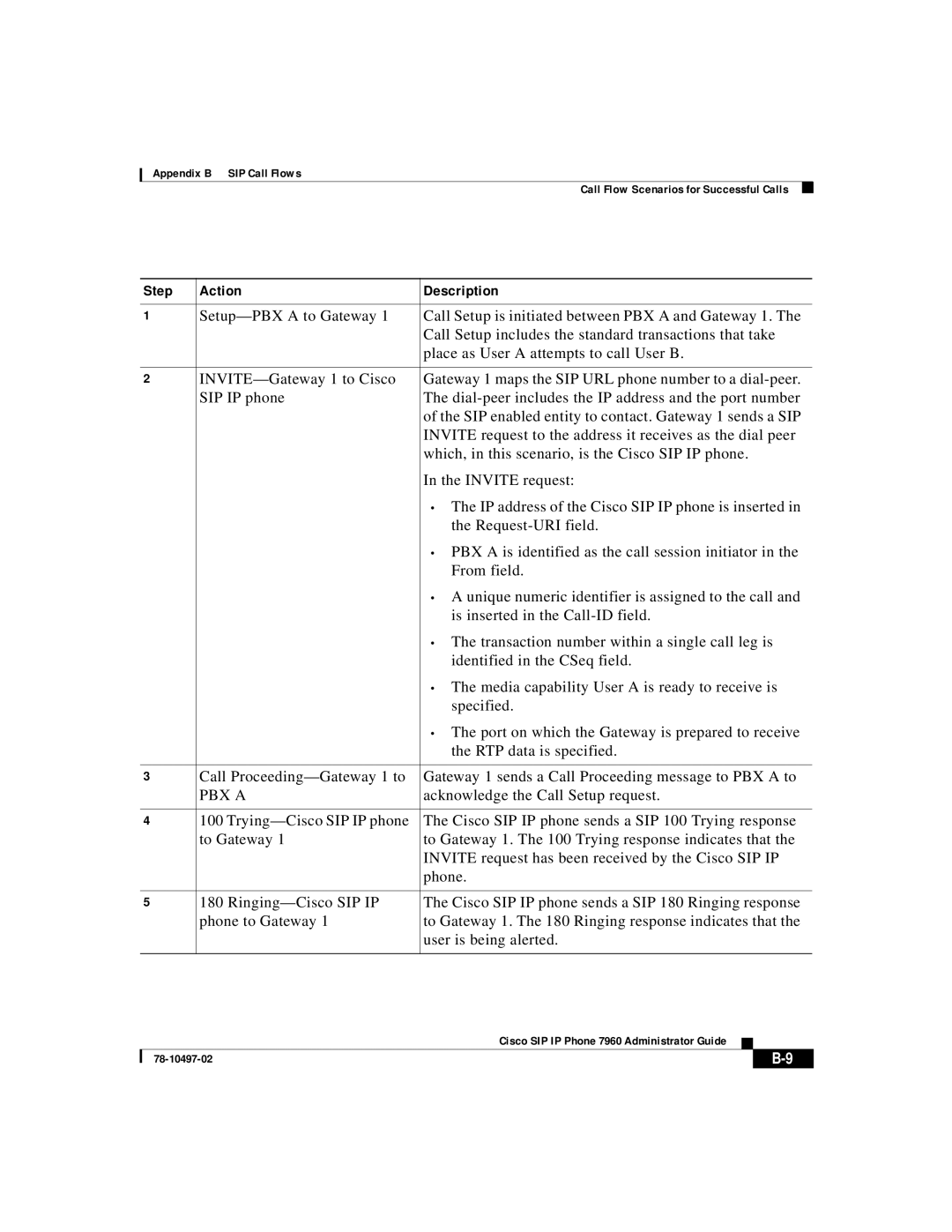
Appendix B SIP Call Flows
Call Flow Scenarios for Successful Calls
Step | Action | Description |
|
|
|
1 | Call Setup is initiated between PBX A and Gateway 1. The | |
|
| Call Setup includes the standard transactions that take |
|
| place as User A attempts to call User B. |
|
|
|
2 | Gateway 1 maps the SIP URL phone number to a | |
| SIP IP phone | The |
|
| of the SIP enabled entity to contact. Gateway 1 sends a SIP |
|
| INVITE request to the address it receives as the dial peer |
|
| which, in this scenario, is the Cisco SIP IP phone. |
|
| In the INVITE request: |
|
| • The IP address of the Cisco SIP IP phone is inserted in |
|
| the |
|
| • PBX A is identified as the call session initiator in the |
|
| From field. |
|
| • A unique numeric identifier is assigned to the call and |
|
| is inserted in the |
|
| • The transaction number within a single call leg is |
|
| identified in the CSeq field. |
|
| • The media capability User A is ready to receive is |
|
| specified. |
|
| • The port on which the Gateway is prepared to receive |
|
| the RTP data is specified. |
|
|
|
3 | Call | Gateway 1 sends a Call Proceeding message to PBX A to |
| PBX A | acknowledge the Call Setup request. |
|
|
|
4 | 100 | The Cisco SIP IP phone sends a SIP 100 Trying response |
| to Gateway 1 | to Gateway 1. The 100 Trying response indicates that the |
|
| INVITE request has been received by the Cisco SIP IP |
|
| phone. |
|
|
|
5 | 180 | The Cisco SIP IP phone sends a SIP 180 Ringing response |
| phone to Gateway 1 | to Gateway 1. The 180 Ringing response indicates that the |
|
| user is being alerted. |
|
|
|
|
| Cisco SIP IP Phone 7960 Administrator Guide |
|
|
|
|
| ||
|
|
|
| |
|
|
|
